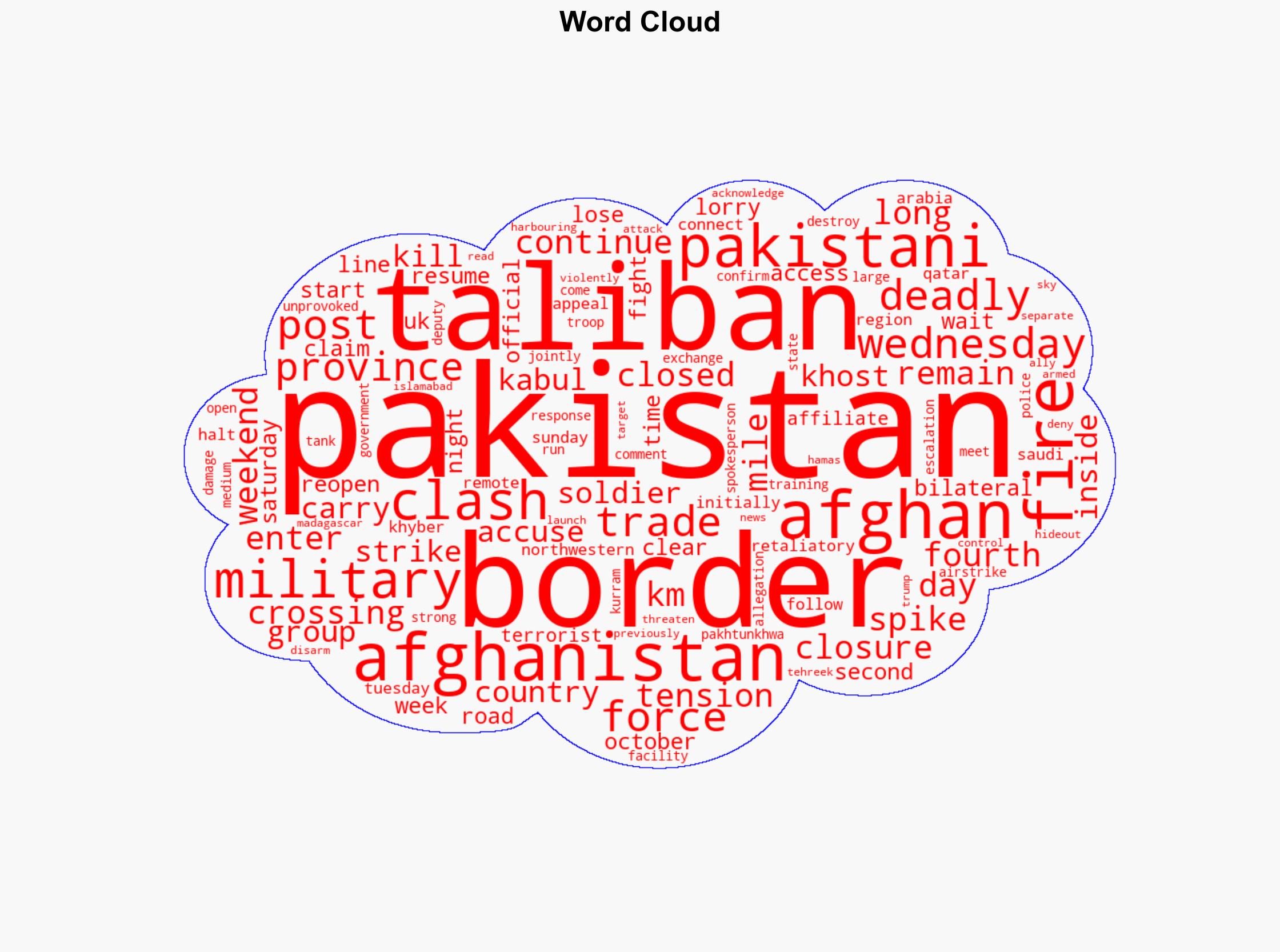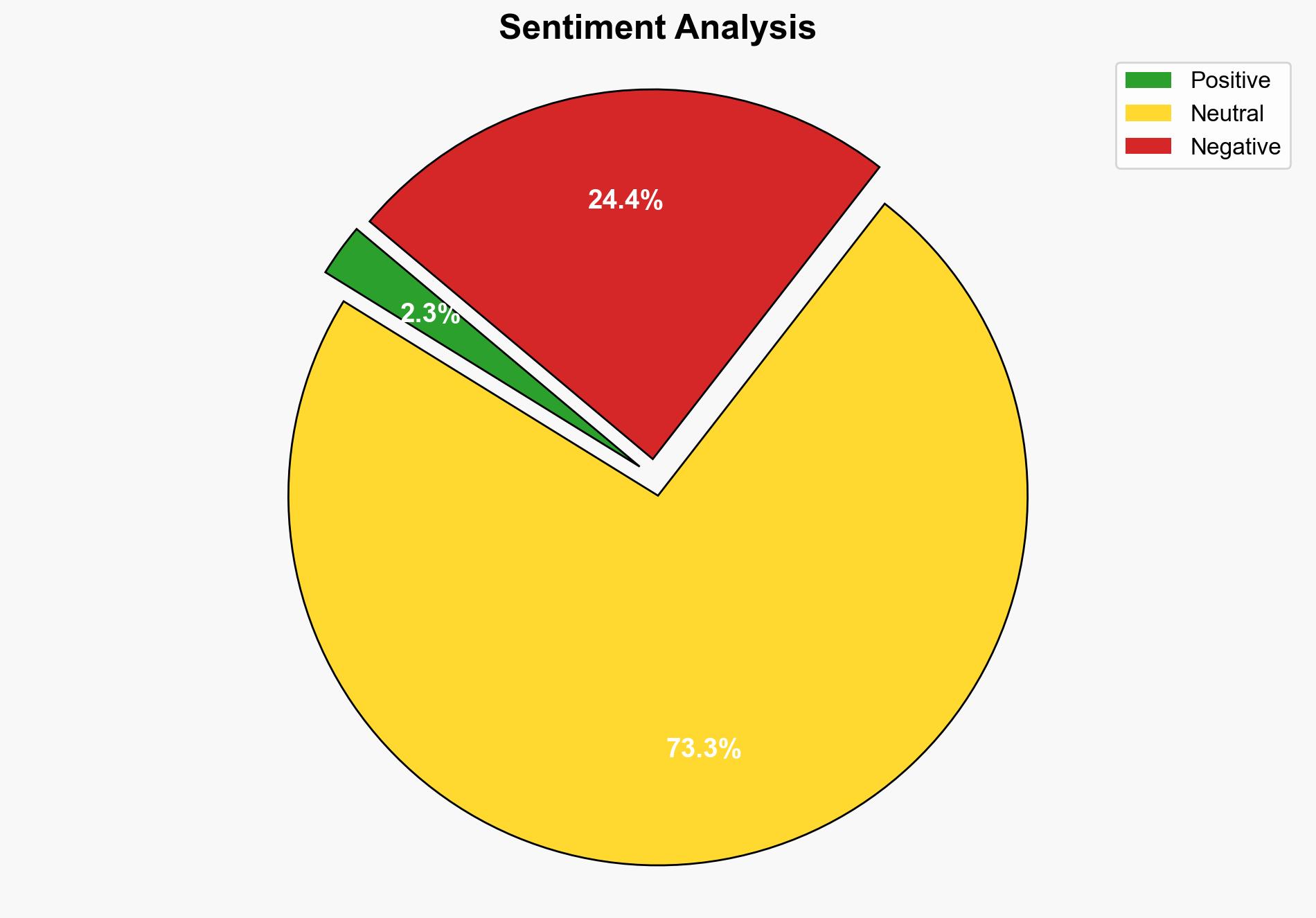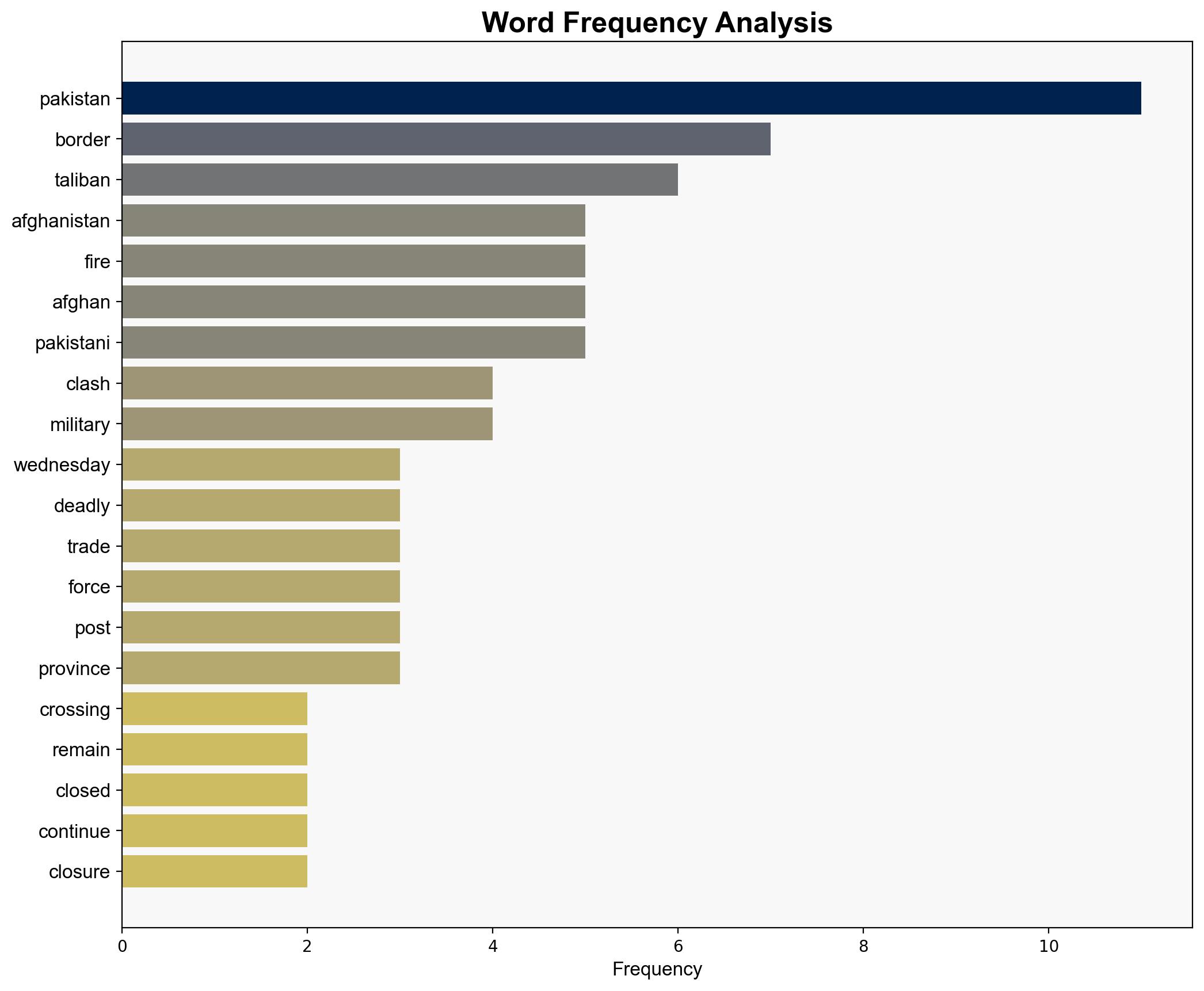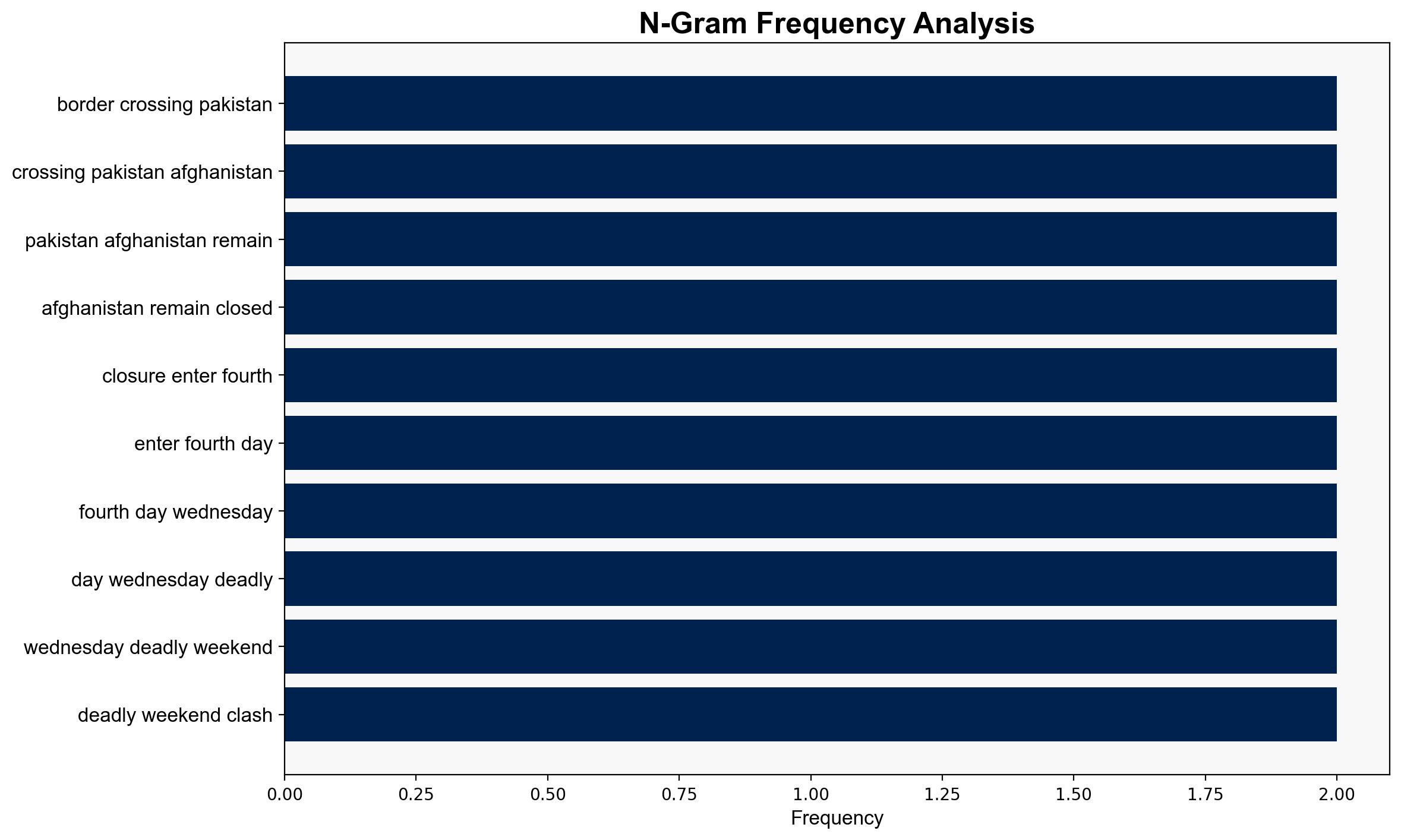Long queues at border crossings amid Afghan-Pakistan clashes – Sky.com
Published on: 2025-10-15
Intelligence Report: Long queues at border crossings amid Afghan-Pakistan clashes – Sky.com
1. BLUF (Bottom Line Up Front)
The most supported hypothesis is that the border clashes are primarily driven by retaliatory actions between Afghan and Pakistani forces, exacerbated by the presence of Taliban-affiliated groups. This assessment is made with moderate confidence due to the complexity and historical context of the conflict. Recommended action includes diplomatic engagement to de-escalate tensions and increased monitoring of Taliban movements in the region.
2. Competing Hypotheses
1. **Hypothesis A**: The clashes are a result of direct military provocations and retaliations between Afghan and Pakistani forces, with the involvement of Taliban-affiliated groups exacerbating the situation.
2. **Hypothesis B**: The clashes are primarily driven by internal political dynamics within Afghanistan and Pakistan, using border tensions as a means to consolidate power domestically and distract from internal issues.
Using the Analysis of Competing Hypotheses (ACH) 2.0, Hypothesis A is better supported due to consistent reports of direct military engagements and the involvement of Taliban-affiliated groups, as well as historical patterns of cross-border skirmishes.
3. Key Assumptions and Red Flags
– **Assumptions**: It is assumed that both Afghan and Pakistani forces are acting under direct orders from their respective governments. There is also an assumption that Taliban-affiliated groups are acting independently rather than as proxies for either government.
– **Red Flags**: The lack of independent verification of casualty figures and the potential bias in state-run media reports from both countries. The possibility of misinformation or propaganda being used to justify military actions.
4. Implications and Strategic Risks
The continuation of these clashes poses significant risks of escalation, potentially drawing in regional powers and impacting broader geopolitical stability. Economic implications include disruptions to trade and increased tension affecting regional markets. The psychological impact on border communities and potential for increased refugee flows are also concerns.
5. Recommendations and Outlook
- Engage in diplomatic talks facilitated by neutral third parties to de-escalate tensions.
- Enhance intelligence-sharing mechanisms with regional allies to monitor Taliban movements.
- Scenario-based projections:
- Best Case: Successful diplomatic intervention leads to a ceasefire and reopening of borders.
- Worst Case: Escalation leads to broader regional conflict involving external powers.
- Most Likely: Continued skirmishes with intermittent diplomatic efforts, maintaining a status quo of tension.
6. Key Individuals and Entities
– Taliban-affiliated groups operating in the region.
– State-run media outlets in Afghanistan and Pakistan.
7. Thematic Tags
national security threats, regional focus, counter-terrorism, geopolitical stability





